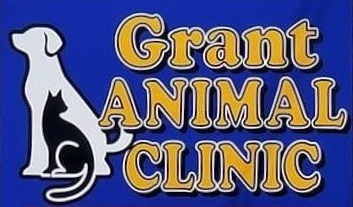 A dog neuter, also known as castration, is the surgical removal of the male testicles. At Grant Animal Clinic, the dog neuter procedure is performed as what is called a “close castration,” where the testicles, blood vessels, and spermaticord remain housed together within a connective tissue sheath known as the vaginal tunic. This version of the dog neuter accounts for less bleeding and ease of clamping and tying off the major blood vessels (testicular artery and vein).
A dog neuter, also known as castration, is the surgical removal of the male testicles. At Grant Animal Clinic, the dog neuter procedure is performed as what is called a “close castration,” where the testicles, blood vessels, and spermaticord remain housed together within a connective tissue sheath known as the vaginal tunic. This version of the dog neuter accounts for less bleeding and ease of clamping and tying off the major blood vessels (testicular artery and vein).
The neuter incision is not made over the scrotum, the fold of loose skin that normally houses the testicles but just in front. The veterinary surgeon gently pushes each testicle into the inguinal canal and exteriorizes it one at a time through one small incision. Prior to removing the testicle, the major blood vessels are clamped and tied off with two sutures called ligatures.
Since this procedure requires the isolation and tying off of major abdominal arteries to prevent internal bleeding, post-operatively, the male patient’s life literally depends on the integrity and strength of the ligatures used to tie off both testicular arteries and veins. Thus, the attention and skill of the veterinary surgeon and the quality of suture material is very important. Grant Animal Clinic prides itself in having attending veterinarians on our medical team that have vast surgical experience and applying the very best the veterinary surgical industry has to offer in top quality suture material. Also in the context of surgical skill and choice of top brand suture materials, following a neuter, the closure is also dependent on the skill of the veterinary surgeon and the quality of the suture material.
Prior to making a surgical approach for a neuter, the surgical site should be aseptically prepped by clipping away all hair and performing a proper surgical scrub of the region surrounding the approach. The veterinary surgeon performing the neuter should be wearing a surgical cap and mask, have his/her hands surgically scrubbed, and be outfitted in a sterile surgical gown and wearing sterile surgical gloves. The surgical site should then be isolated with sterile surgical drapes to maintain a sterile surgical field in which to work. Not following these protocols can predispose the patient to serious post-operative infection.
Finally, one of the most potentially risky aspects of any surgical procedure is the anesthesia. Proper anesthetic protocols, state of the art monitoring equipment, and effective and safe pre and post operative pain medication are all essential components to smooth and safe anesthesia and patient comfort Please see this article on how Grant Animal Clinic employs best practices in canine Dog Anesthesia for more detailed aspects of safe administration of anesthesia.
Clearly, there are many moving parts to the canine neuter procedure, thus, it should never be referred to as “just a neuter.” Always bear in mind that a dog neuter is a surgery that involves the tying off of major blood vessels and should be treated with the utmost seriousness and care.
